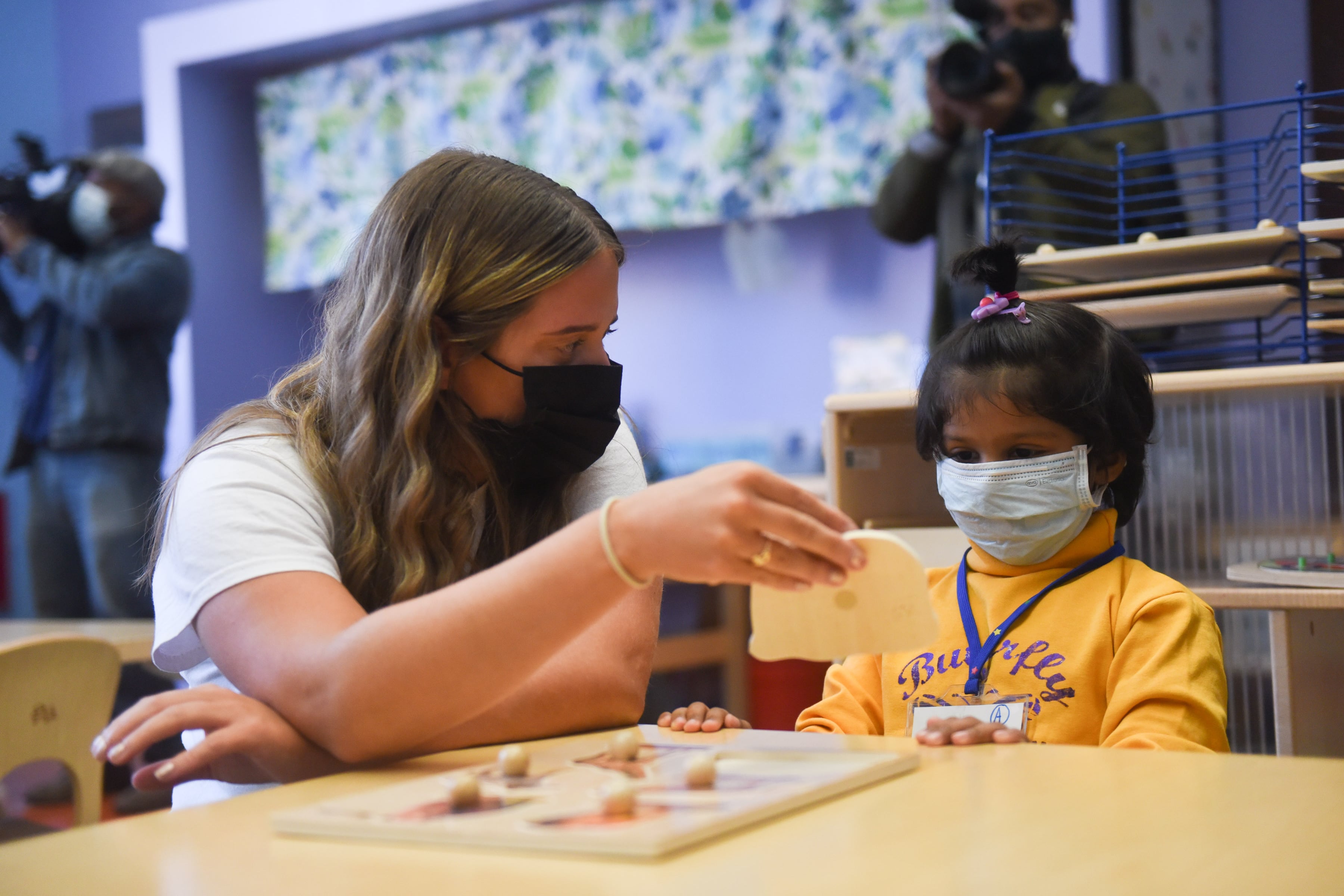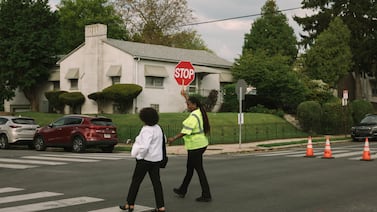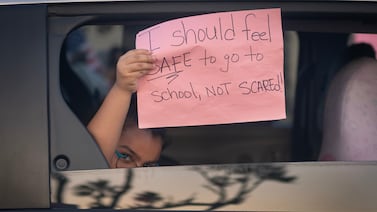New York City’s Learning Bridges program was launched to close child care gaps while students in the country’s largest school system return to classes part-time. But it’s not working for some of the very people it’s designed to help, like the Martinez family, a Staten Island mom who works as a public school teacher and dad who is an emergency room nurse.
The problem is that Ms. Martinez, who asked to withhold her first name for fear of retaliation, needs to arrive at her Brooklyn school by 8 a.m. Her son’s assigned Learning Bridges site doesn’t open until 9 a.m.
So Martinez and her toddler son are on the road by 7 a.m. They ride together for about 30 minutes to meet her husband at a midway point on the side of the road after his overnight shift in a Brooklyn hospital.
Martinez hands off her 3-year-old and heads to the classroom where she teaches fourth grade. Her son travels back home with his exhausted father, who watches him until the day care center opens. Pickup is just as impossible: Martinez’s day ends at 2:30 p.m., the same time her son’s day care center closes and while her husband is trying to catch up on sleep.
“I’m just very disappointed,” she said. “It’s not helping us.”
New York City reached the final phase of a staggered reopening of school buildings last week, with students in all grades returning to classrooms for the first time in six months. Yet many working parents are still facing a child care crunch they’ve contended with since the start of the coronavirus pandemic.
In fact, it has only become harder for caregivers who must return to jobs sites while their children are only in school buildings one to three times a week — not to mention the tens of thousands of students in coronavirus hotspots who have already been forced to learn exclusively online after rising cases forced 103 public schools to shutter abruptly.
Mayor Bill de Blasio pledged in July to open 100,000 free child care seats to serve students on the days they aren’t in schools. The program has been slow to get off the ground, opening with only 30,000 slots, and after-school care is not guaranteed. By the end of October, 70,000 seats are expected to come online. Full capacity won’t be reached until mid-December, according to the city’s projections.
The city has given preference to education department employees and first responders, along with children in the neighborhoods hardest hit by COVID-19. It’s not clear why the center Martinez’s son was assigned to is operating for so few hours, when city guidelines call for early childhood centers to provide six hours and 20 minutes of care. For children in grades kindergarten through eighth, Learning Bridges sites are to operate from 8 a.m. until 3 p.m.
In nine ZIP codes where spiking coronavirus cases have forced school closures, Learning Bridges programs have also shut down, according to an email sent Monday to providers. City officials did not respond to questions about whether they plan to provide essential workers in the affected areas with emergency child care.
In many ways, Learning Bridges is meant to fill a similar need as the child care centers that were opened in March for the children of hospital staff, sanitation crews, grocery store clerks, and other first responders and essential workers. Called Regional Enrichment Centers, many were housed inside empty public school buildings. But that program, which served about 13,000 children, had a key difference: parents could drop off and pick up their children any time between 7:30 a.m. and 6 p.m.
Heather Alcorn, a single mom in Brooklyn’s Bedford-Stuyvesant neighborhood, relied on the enrichment centers for her young daughter. Some days, her daughter was the only preschooler in a classroom with two other adults. The girl learned to recognize letters and write her name as Alcorn worked in her Manhattan biology research lab. Alcorn said the centers were run safely and that she felt “spoiled” by the flexible and convenient hours.
When the centers closed so the buildings could be turned back over to teachers and principals as they prepared for the new year, Alcorn had to take a week of vacation time.
Now that her daughter has started pre-K, Alcorn said she is grateful for the days her little one is in the classroom and impressed with her teachers. But Alcorn is contending with a shortened school day of 5.5 hours and three days of remote learning during the week. To make it work, Alcorn has dipped into a bank of emergency child care days offered through her work.
She’s still waiting to hear whether her daughter has won a slot in the Learning Bridges program, or whether she’ll need to figure out some other long-term plan. Meanwhile, Alcorn said her only colleague with children left the state to be with family members who could pitch in.
“I feel alone with this,” Alcorn said. “It’s frustrating, and I don’t see how this is going to be sustainable.”
For some who can afford to pay for care, the slow rollout of the Learning Bridges program makes it hard to plan ahead.
Lisa Brassell has rearranged her work schedule as a supervisor in an engineering lab so that she can juggle remote learning for her daughter, who’s in second grade, and the shortened school day for her son, who is in pre-K.
Her husband, an essential worker with the city’s Department of Environmental Protection, tried to take time off work to pitch in, but was denied because he is considered an essential worker. He’s now weighing whether to take federal family leave to care for their young son, who needs help navigating therapies remotely for special needs.
In the meantime, the family, who lives in Manhattan’s Washington Heights neighborhood, is still waiting to hear whether their children can enroll in Learning Bridges. Brassell considered signing up for some paid child care programs. But those require a months-long financial commitment that could end up wasted if the family gets a last-minute notice that they’ve scored a seat through the city.
“At this point, I just want to know if we have a Learning Bridges spot, and if we don’t, if we’re ever going to get one,” she said. “We kind of held on to hope that we would get something, and so far we haven’t heard anything except that received our application.”






